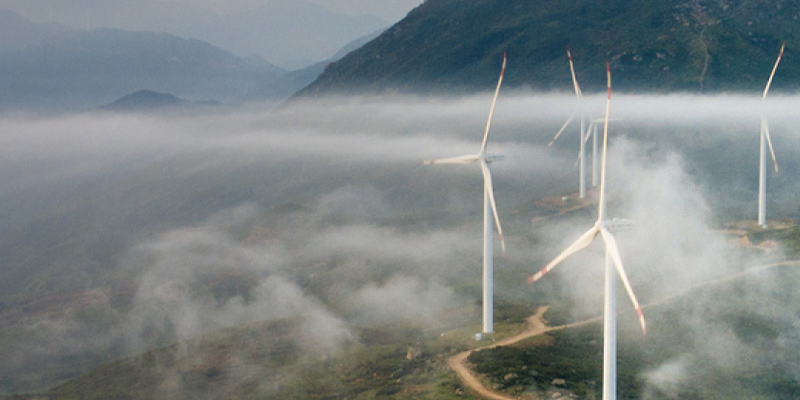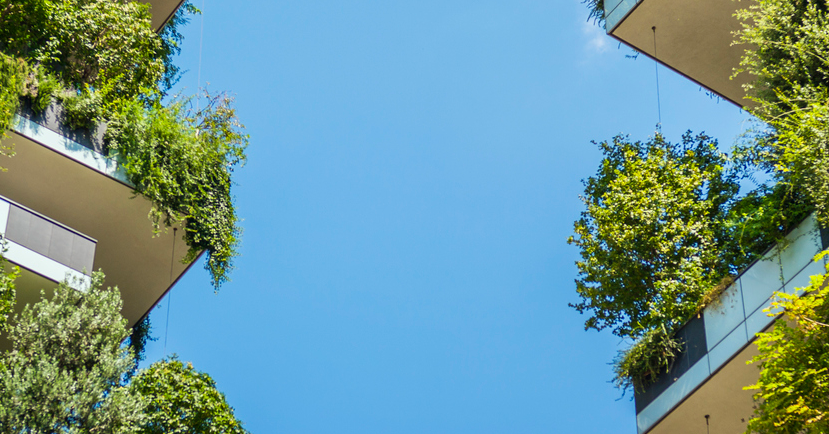Sun and wind. Plentiful, renewable and clean. Wind and solar energy continue to increase with the demand for more clean energy in an environmentally conscious society. Wind and Solar Farms are springing up across the country and High Density Polyethylene (HDPE) conduit plays a role in distributing energy into a usable power source. HDPE conduit is the carrier and protector of power and fiber optic cables that enables transmission to the substation for distribution. Advances in the extrusion of HDPE conduit now allow the cables to be installed during the manufacturing process to create a system ready for underground installation. CIC, or Cable in Conduit, is available with power cable or fiber optic cable (for command and control) and is especially economical for plowing and directional drilling applications.
The Indian renewable energy sector is the fourth most attractive1 renewable energy market in the world. As of October 2018, India ranked fifth in installed renewable energy capacity. According to the 2018 Climate scope report, India ranked second among the emerging economies to lead to transition to clean energy.
"This is one of the most ambitious renewable energy targets in the world, far more than the targets set by developed countries. Overall, these targets are highly desirable, but will need major reforms in the transmission and distribution sectors and stable policies to achieve," energy and climate change expert Chandra Bhushan told DW.
Wind Farms and Solar Farms
Whether building a large wind farm and using Cable-in-Conduit (CIC) to monitor the energy being supplemented to the grid, or supplying power to a solar farm, Dura-Line’s conduit can help with communication and power needs. Modern technology is making "green" more affordable and efficient.
Sustainability Matters at Dura-Line
Dura-Line prioritizes sustainability and a greener future. High-density polyethylene (HDPE) conduit is an environmentally responsible choice that will serve generations to come. It is ecologically efficient, yet still rugged enough to function in extreme conditions. The manufacturing process requires significantly less energy to fabricate, transport, and install compared to other pipe products. Strong, durable, lightweight, and flexible, it is available in sticks and on reels.
A Greener Tomorrow
The 1987 Brundtland Report coined the term and popularized the definition:
“Sustainable development is development that meets the needs of the present without compromising the ability of future generations to meet their own needs.”
Less Dependence on Fossil Fuels
Fossil fuels have served the industrial revolution age well, but since they are nonrenewable, they are rapidly becoming too expensive or too environmentally damaging. Based on the REN21, the Renewable Energy Policy Network for the 21st Century 2017 report, renewables contributed 19.3% to humans' global energy. National renewable energy markets are projected to continue to grow strongly in the coming decade and beyond as more and more countries strive for a transition to 100 percent reliance on renewable energies.
Global Trend
Worldwide investments in renewable technologies amount to billions of dollars and millions of jobs. At least 30 nations around the world already have renewable energy contributing more than 20 percent of their energy supply.
Unlimited Energy Resources
Renewable energy systems are becoming more efficient and cheaper as new technology emerges, and their share of total energy consumption is increasing. Renewable energy is collected from renewable resources: wind, sunlight, rain, geothermal heat, biomass, and even hydropower using dams and the ocean tides and waves.
In contrast to other energy resources, various renewable energy assets exist in every area of every country. Well suited to rural areas, many renewable energy projects are large-scale, resulting in jobs, economic benefits, energy security, and climate change mitigation.
Reducing our reliance on dwindling resources, such as coal, oil, and natural gas and converting more efforts towards alternative electricity generation, air and water heating/cooling, transportation, and rural (off-grid) energy services will create a greener future.



